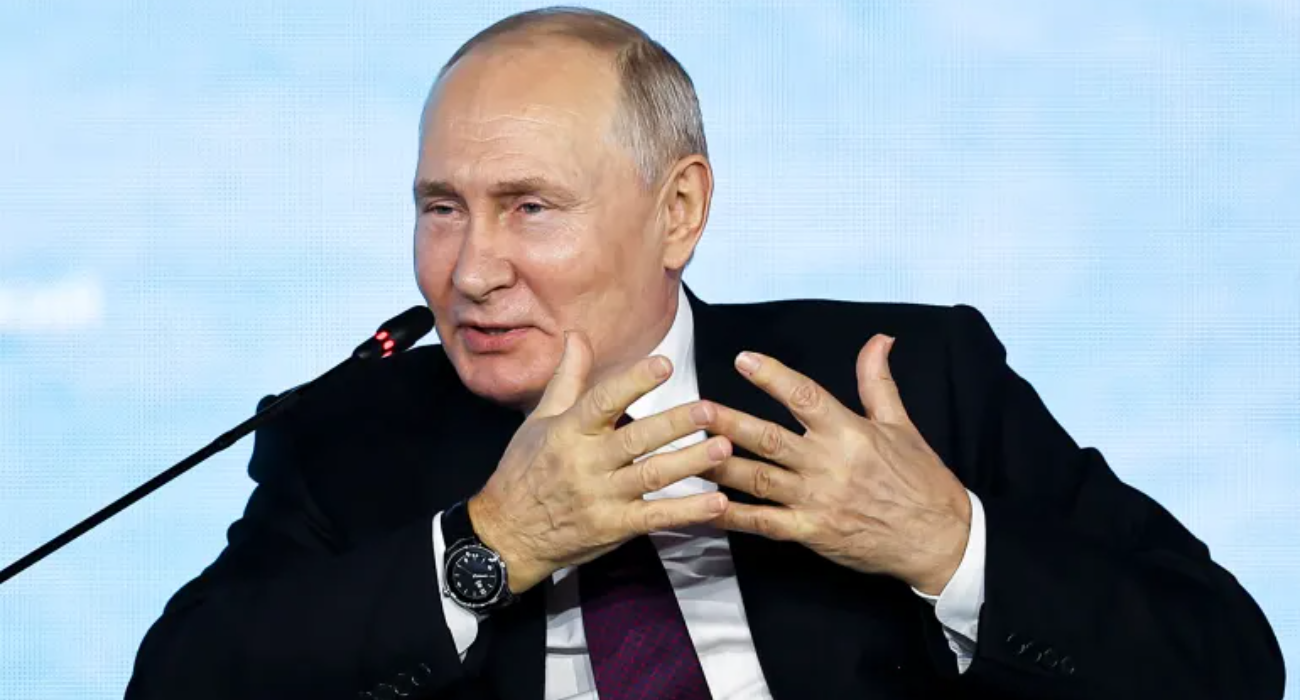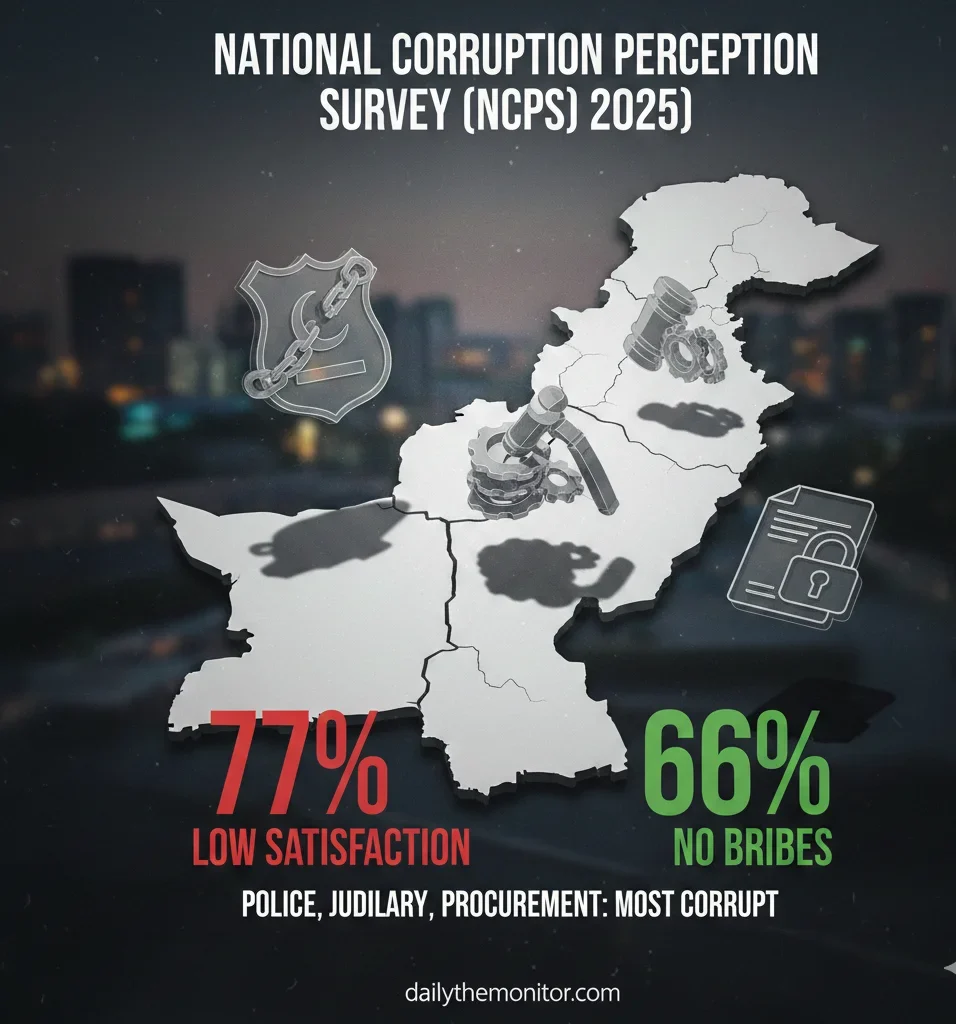News
“Utterly False”: Putin Dismisses Biden’s Claim of NATO Attack Plans

The frigid December air crackled with a different kind of chill than usual – the one born of distrust and accusation. President Biden’s claim about Russia’s potential NATO gambit hung heavy in the air, reverberating through the corridors of power and unsettling the delicate balance of global security. Putin’s rebuttal, swift and emphatic, branded the accusation as “nonsense,” but did it dispel the shadows of doubt creeping across the West?
Behind the stark headlines lies a tapestry woven with threads of history, strategic positioning, and simmering geopolitical tensions. To truly understand the gravity of the situation, we must untangle these threads, examining the motivations and anxieties woven into the fabric of this escalating drama.
Roots of the Accusation:
Biden’s statement, delivered during a tense NATO summit, rested on intelligence reports hinting at potential Russian plans to “strike out” at a member state. While details remained shrouded in secrecy, the specter of a direct confrontation between Russia and the West sent shivers down spines across the alliance.
Some analysts pointed to Russia’s assertive actions in recent years, from the Crimea annexation to military interventions in Syria and elsewhere, as evidence of a latent expansionist agenda. Others noted a pattern of “hybrid warfare” tactics, such as cyberattacks and disinformation campaigns, aimed at weakening Western resolve and eroding NATO’s unity.
The war in Ukraine further cast a long shadow, serving as a grim reminder of Russia’s willingness to use military force. With the conflict still smoldering, Biden’s claim resonated with a visceral fear of escalation, painting a chilling picture of a potential spillover into NATO territory.
Putin’s Pushback:
The Kremlin’s response was swift and unequivocal. Putin, in a televised address brimming with indignation, dismissed the accusations as “utterly false” and a product of “NATO propaganda.” He reiterated Russia’s long-held concerns about the alliance’s eastward expansion, arguing that it threatened their security by encircling their borders.
However, his vehement denial did little to dissipate the clouds of suspicion. Critics pointed to Russia’s military buildup near the Ukrainian border and increased military exercises close to NATO frontiers as indicators of a more aggressive posture. Some questioned the genuineness of Putin’s claims, alleging them to be a smokescreen masking potential strategic intentions.
Echoes of Skepticism and Speculation:
The international community reacted with a mixed chorus of skepticism and unease. While some viewed Biden’s warning as a necessary cautionary measure in the face of a potentially belligerent Russia, others expressed concern about the lack of concrete evidence and the potential for fueling undue panic.
“Without credible intelligence and actionable threats, such broad accusations risk stoking fear and escalating tensions unnecessarily,” cautioned a seasoned European diplomat. “We must tread carefully, ensuring dialogue and verification alongside vigilance, to avoid being drawn into a self-fulfilling prophecy of conflict.”
Analysts further dissected the timing of the accusation, with some suggesting it could be an attempt by the U.S. to shore up wavering European support for the Ukrainian war effort. Others pointed to domestic political considerations in the lead-up to the U.S. midterm elections, suggesting a calculated move to galvanize public opinion against Russia.
The Delicate Dance of De-escalation:
Amidst the swirl of accusations and uncertainties, the immediate challenge lies in de-escalating the situation and rebuilding trust. Open communication, fact-checking, and responsible diplomacy are crucial to prevent misunderstandings from spiraling into miscalculation and conflict.
NATO must maintain a firm posture of deterrence, ensuring its readiness to defend any member state against potential aggression. However, blind belligerence and inflammatory rhetoric would be foolhardy. Open channels of communication with Russia, even in the face of deep mistrust, are crucial to preventing misunderstandings and ensuring accidental clashes don’t ignite a wider fire.
The Kremlin, too, must step back from the brink of brinkmanship. Transparency in troop movements and a genuine commitment to dialogue through established channels like the Organization for Security and Co-operation in Europe (OSCE) could go a long way in allaying the concerns of the West.
Addressing the Roots of Tension:
Beyond the immediate crisis, addressing the long-term roots of tension between Russia and the West is critical. Both sides must acknowledge the legitimate security concerns of the other. NATO’s eastward expansion, while a legitimate exercise of self-determination by nations seeking security, cannot be perceived as a direct threat to Russia’s sovereignty. Equally, Russia’s assertive actions and military interventions must not be seen as a prelude to aggression against the West.
Finding common ground on arms control, cybersecurity, and conflict resolution in regions like Syria and Ukraine could pave the way for a more cooperative relationship. Building trust through regular military-to-military contacts and joint exercises, however limited, could ease tensions and prevent miscalculations.
Ultimately, navigating this turbulent sea of mistrust and potential conflict requires a concerted effort from all sides. Leaders must exhibit statesmanship, prioritizing diplomacy and communication over chest-thumping and inflammatory rhetoric. Citizens must demand transparency from their governments and resist succumbing to fearmongering and propaganda. And analysts must diligently separate fact from fiction, ensuring clear-headed assessments that inform prudent decision-making.
This is not a battle to be won or lost, but a dance to be navigated with grace and foresight. Every misstep, every miscalculation, carries the potential to push both sides closer to the precipice. Instead of perpetuating the cycle of accusation and mistrust, we must prioritize understanding, dialogue, and the painstaking construction of a shared future where security and prosperity can coexist.
As the echoes of Putin’s “nonsense” reverberate through the corridors of power, we must remember that words, like actions, have consequences. It is in the silence between the accusations, in the quiet spaces of diplomacy and reason, that the seeds of a safer future can be sown. It is our collective responsibility to nurture those seeds, ensuring they blossom into a world where “nonsense” gives way to understanding, and the icy air of suspicion melts into the warmth of genuine cooperation.
Discover more from The Monitor
Subscribe to get the latest posts sent to your email.
Analysis
Brown University Shooting Sparks Renewed Manhunt After Suspect Released

Providence, R.I. — The tranquil campus of Brown University was shattered this weekend by a deadly shooting that left two students dead and nine others wounded during final exams. As the community reels from the violence, authorities have reset their manhunt after releasing a previously detained person of interest, citing new evidence that “points in a different direction”.
The shooting occurred Saturday afternoon inside the Barus & Holley engineering building, a hub of student activity and academic rigor. Witnesses described chaos erupting as gunfire rang out during a packed exam session. One student, still visibly shaken, told reporters, “We were just trying to finish our semester. Then everything changed in seconds.”
Table of Contents
A Campus in Mourning
Brown University President Christina Paxson issued a statement calling the attack “an unspeakable tragedy,” and announced that classes and exams would be suspended for the week. Vigils have sprung up across campus, with students lighting candles and leaving handwritten notes outside the building where the shooting occurred.
“This is not just a university story,” said Rhode Island Governor Daniel McKee. “This is a story about young lives cut short, families devastated, and a community that deserves answers”.
The Search Intensifies
On Monday, Providence Police released new surveillance footage showing a masked individual dressed in black walking near the scene shortly before the attack. The FBI has joined the investigation, offering a $50,000 reward for information leading to the arrest and conviction of the suspect, described as a male approximately 5’8″ with a stocky build.
“This individual definitely targeted Brown University,” said Chief Colonel Oscar L. Perez, Jr. at a press conference. “We are exploring all possible motives, but this was not random”.
The suspect remains at large, and the search has expanded beyond Providence into neighboring states. Federal agents have been deployed to canvass neighborhoods, analyze digital evidence, and follow up on community tips.
A Community Demands Justice
The release of the initial detainee has sparked frustration among students and families, many of whom are demanding transparency and swift justice. “We want to see the individual that pulled the trigger on these young kids apprehended, identified and brought to justice,” said Governor McKee.
Brown University has set up emergency counseling services and a dedicated hotline for students and staff affected by the tragedy. Meanwhile, the broader academic community is grappling with the implications of violence in spaces meant for learning and growth.
What Comes Next
As the investigation unfolds, questions linger: Was this an isolated act or part of a broader threat? What security lapses allowed the gunman to enter a campus building undetected? And how will Brown—and universities nationwide—respond to the growing specter of campus violence?
For now, Providence remains on edge. Helicopters circle overhead, police checkpoints dot the city, and a once-quiet Ivy League campus finds itself at the center of a national reckoning.
Discover more from The Monitor
Subscribe to get the latest posts sent to your email.
Biography
Tributes Pour In for Rob Reiner, 78, as Hollywood Mourns a Storyteller Who Shaped an Era

The death of filmmaker Rob Reiner at age 78 has prompted an outpouring of tributes across the entertainment world, as colleagues, actors, and cultural figures reflect on the legacy of a director whose work helped define modern American cinema. Reiner and his wife, Michele Singer Reiner, were found dead in their Los Angeles home, according to police statements released this week.
Reiner’s passing—under circumstances now the subject of an active homicide investigation—has sent shockwaves through Hollywood and beyond. Authorities confirmed that the couple’s son, Nick Reiner, has been taken into custody and “booked for murder,” though charges have not yet been formally filed. The Los Angeles Police Department has said the case remains open as detectives continue their inquiry.
Table of Contents
A Career That Spanned Generations
Rob Reiner’s influence on American storytelling is difficult to overstate. From the comedic brilliance of This Is Spinal Tap to the emotional resonance of Stand By Me, When Harry Met Sally, and A Few Good Men, Reiner’s films became cultural touchstones—quoted, revisited, and taught in film schools for decades.
His work blended humor with humanity, often exploring the fragile, complicated bonds between people. Reiner’s films were rarely just entertainment; they were emotional experiences that lingered.
Colleagues described him as a director with an uncanny ability to draw out vulnerability from actors while maintaining a light, collaborative set. “Rob had a way of making you feel safe enough to take risks,” one longtime collaborator said in a tribute posted shortly after news of his death broke.
A Loss Felt Across Hollywood
As news spread, tributes began flooding social platforms and industry circles. Actors who grew up watching his films shared memories of the first time they encountered The Princess Bride or Misery. Directors spoke of Reiner’s craftsmanship—his ability to move seamlessly between genres without losing his signature warmth.
Industry veterans noted that Reiner’s career bridged eras: from the golden age of network television, where he first gained fame on All in the Family, to the rise of prestige filmmaking in the 1980s and 1990s, and finally to the streaming era, where his classics found new audiences.
His death, many said, marks the end of a particular Hollywood lineage—one rooted in character-driven storytelling, emotional honesty, and a belief that films could be both deeply personal and universally resonant.
A Family Tragedy Under Public Scrutiny
The circumstances surrounding Reiner’s death have added a layer of heartbreak to the tributes. Police confirmed that both Reiner and his wife were found dead in their Brentwood home, and that their son Nick was arrested shortly thereafter. The case has drawn intense media attention, with officials urging the public to allow investigators space to complete their work.
Despite the grim backdrop, those who knew Reiner have focused their public statements on his life rather than the tragedy. “Rob Reiner changed the way America tells stories,” one filmmaker wrote. “His films helped us understand ourselves.”
A Legacy That Will Endure
Reiner’s influence will continue to ripple through Hollywood for generations. His films remain staples of American culture—quoted at weddings, referenced in political debates, and rediscovered by new audiences every year.
For many, the loss feels personal. Reiner’s work was woven into the fabric of everyday life: the comfort of a familiar line, the catharsis of a well-crafted scene, the joy of a story told with sincerity.
As Hollywood mourns, one truth is clear: Rob Reiner didn’t just make movies. He made memories.
Discover more from The Monitor
Subscribe to get the latest posts sent to your email.
Corruption
Transparency International Pakistan releases NCPS 2025

ISLAMABAD—Transparency International Pakistan (TIP) on Tuesday released its comprehensive National Corruption Perception Survey (NCPS) 2025, presenting a mixed picture of public sentiment on corruption, anti-graft efforts, and governance across the country.
The survey, conducted with 4,000 respondents from all four provinces, reveals that while a significant majority of citizens did not report paying a bribe in the last year, three key public sectors—the Police, Tender/Procurement, and the Judiciary—continue to be perceived as the most corruption-prone institutions.
Table of Contents
Police Top List Despite Perception Improvement
According to the NCPS 2025 findings, the Police remains the most corrupt sector in the eyes of the public, cited by 24% of respondents nationwide. This is followed by the Tender and Procurement process at 16%, and the Judiciary at 14%.
However, the report highlighted a subtle but “notable” positive shift in public perception regarding the Police, registering a 6% improvement in perceived behaviour and service delivery compared to the previous survey.
Low Bribery Rate vs. High Dissatisfaction
The survey’s most encouraging statistic is that a majority of citizens (66%) reported they did not feel compelled to pay a bribe for public services in the past 12 months, which TIP considers a strong indicator of perceived progress in service delivery. Provincially, Sindh reported the highest rate of citizens encountering a demand for a bribe at 46%.
Despite the low rate of personal bribery, public satisfaction with the government’s overall efforts to combat corruption remains low. A significant 77% of respondents nationwide expressed “low satisfaction” or were “not satisfied” with the government’s anti-corruption drive.
The public identified the three major causes driving corruption as a lack of accountability (15%), lack of transparency and limited access to information (15%), and delays in the disposal of corruption cases (14%).
Demand for Accountability of Anti-Graft Bodies
The survey findings reflect a strong public demand for institutional reform and accountability. An overwhelming 78% of Pakistanis believe that anti-corruption institutions like the National Accountability Bureau (NAB) and the Federal Investigation Agency (FIA) should themselves be more accountable and transparent.
Citizens also proposed a blueprint for curbing corruption, prioritising:
- Enhancing accountability (26%)
- Limiting discretionary powers (23%)
- Strengthening Right to Information laws (20%)
The report also found a notable lack of awareness regarding reporting channels, with 70% of citizens being unaware of any official corruption reporting mechanism. Furthermore, 42% stated they would feel safe reporting corruption only if strong whistleblower protection laws were in place.
Economic Stability and Political Finance
On economic matters, approximately 58% of respondents indicated that the government has either fully or partially stabilised the economy, crediting the International Monetary Fund (IMF) programme and the country’s exit from the Financial Action Task Force (FATF) Grey List. However, 57% reported a decline in their purchasing power over the past year.
The survey also highlighted a strong public desire for clean electoral financing, with a combined 83% of respondents supporting either a complete ban or strict regulation of business funding to political parties.
In response to the report, Prime Minister Shehbaz Sharif welcomed the survey, stating that the large number of respondents who reported not encountering corruption during his government reflects the public’s recognition of the reforms aimed at transparency and economic recovery.
For more details on the survey’s public opinion findings, watch this report: Transparency International Report on Corruption – Public Opinion – 9 Dec 2025.
Discover more from The Monitor
Subscribe to get the latest posts sent to your email.
-

 Featured5 years ago
Featured5 years agoThe Right-Wing Politics in United States & The Capitol Hill Mayhem
-

 News4 years ago
News4 years agoPrioritizing health & education most effective way to improve socio-economic status: President
-

 China5 years ago
China5 years agoCoronavirus Pandemic and Global Response
-

 Canada5 years ago
Canada5 years agoSocio-Economic Implications of Canadian Border Closure With U.S
-

 Conflict5 years ago
Conflict5 years agoKashmir Lockdown, UNGA & Thereafter
-

 Democracy4 years ago
Democracy4 years agoMissing You! SPSC
-

 Democracy4 years ago
Democracy4 years agoPresident Dr Arif Alvi Confers Civil Awards on Independence Day
-

 Digital5 years ago
Digital5 years agoPakistan Moves Closer to Train One Million Youth with Digital Skills





















